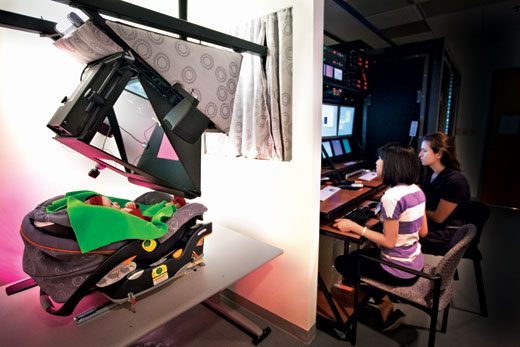The bright-eyed, five-month-old girl gazes at the screen, mesmerized by the moving white dots. The "point of light" display is meant to identify where her eye lingers and whether she shows a preference for "biological motion," such as a simulation of pat-a-cake.
Researchers at the Marcus Autism Center observe her reactions from a bank of monitors nearby: the first shows what the baby is watching, the second is a close-up of her eyes, and the third captures her facial expressions.
We humans are social creatures. From the time we are born, we orient toward other people, watching their expressions and gestures. An infant just a few weeks old will stare at her mother's face, look long into eyes, and mimic facial expressions. This selective focus leads to "mind reading," an ability to tell what others—even strangers—are thinking, feeling, or intending to do, often from just a glance. It's a tendency we have from birth, and a skill we continue to develop for life.
It's different, though, in young children with autism spectrum disorder (ASD).
They start off at a disadvantage and compound it by continuing to pay attention to the "wrong" things—hats instead of hands, shoes instead of faces. Autistic children watching cartoon shows, such as Barney, are as likely to focus on a light switch on the wall as the singing, dancing purple dinosaur.
This lack of interest in human action, believes Georgia Research Alliance Eminent Scholar and Emory Professor of Pediatrics Ami Klin, who has conducted landmark research studies in the field, is key to understanding why autistic children never master the complex nuances of social interaction.

